Superflux
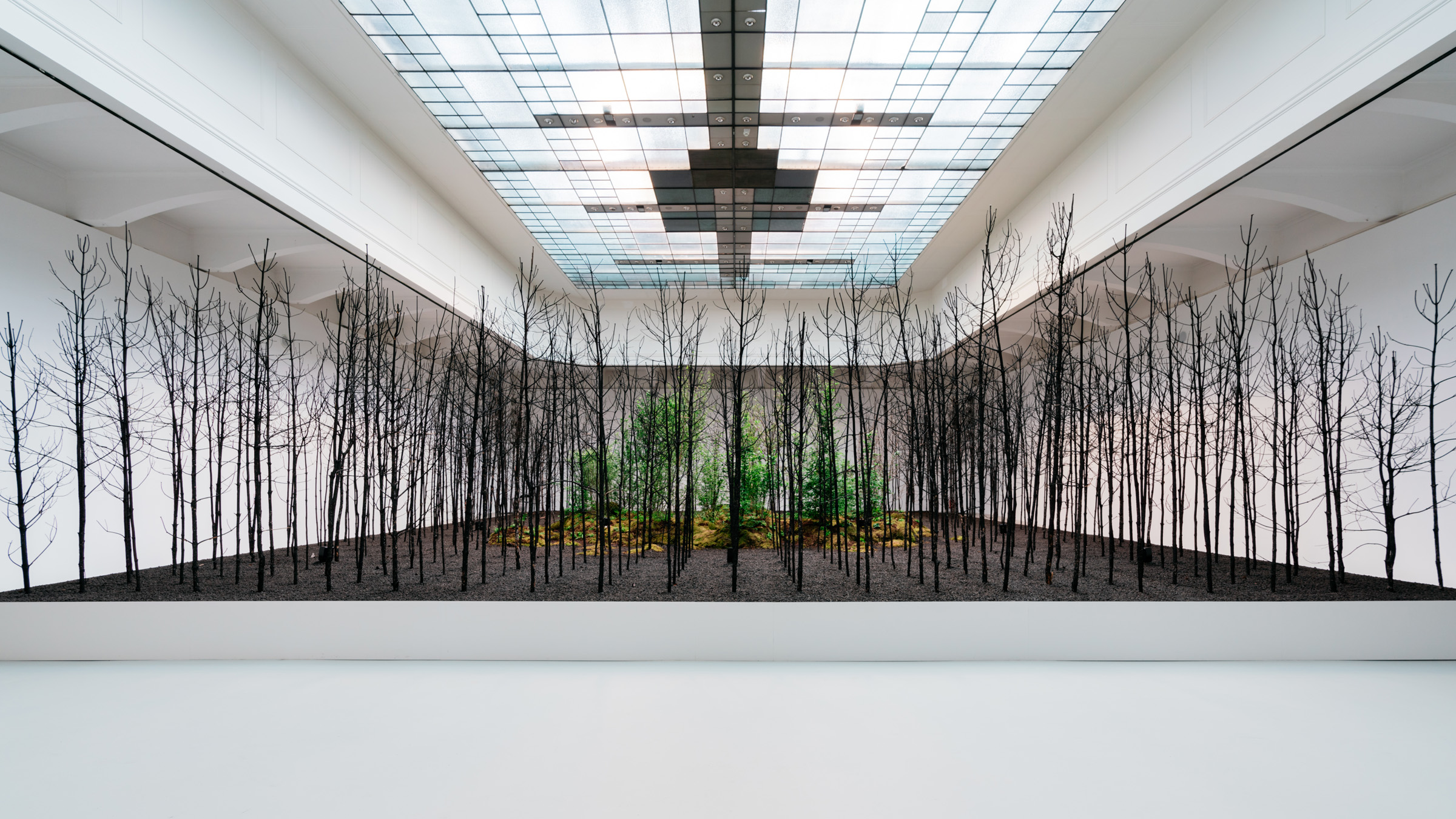
Speculating about reality while adding a dose of folklore and mythology
The skeletal remains of black pine trees stand like soldiers in command. Their charcoaled bodies remain rigid, stuck into the damaged soil, decomposing but not entirely disappearing. The installation looks as if a wildfire gorged its craftsmanship before the viewing, but every bit of it speaks intentionality. Every part of it defines the ethos of Superflux.
Founded by Anab Jain and Jon Ardern in 2009, Superflux calls itself a boundary-defying design and experiential futures company whose research and art practice range from climate change to algorithmic autonomy, from future of work to more-than-human politics. The installation above testifies to this statement. Its title, Invocation for Hope, overviews a slice of the bigger picture the practice paints. “How do we move forward in this shattered landscape?” they ask. Rather than just posing questions, they turn to art and philosophy to fuel the minds of their viewers, pulling them into their works to start acting.
Speculative realism has catered to the well of influences the practice draws from, but lately, they have been tapping into the mysticism of fantasy and folklore, the parallel universes that deflect the reflection of the present world. From here, the practice toys with less grounded ideas, but always instilling the plurality of futures – in the plural form to signal the abundance of what the future may be – and presenting the depth of the symbiosis of the beings, both living and non-living.
Invocation for Hope only identifies one of the myriads of thought-provoking works sculpted by Superflux. With NR, the practice opens up that while this piece may be an introduction to how they work, it only scratches the surface of what runs in the creative minds behind the project and the urgent calls towards the public to do something – more than nothing – to the present climate crisis.
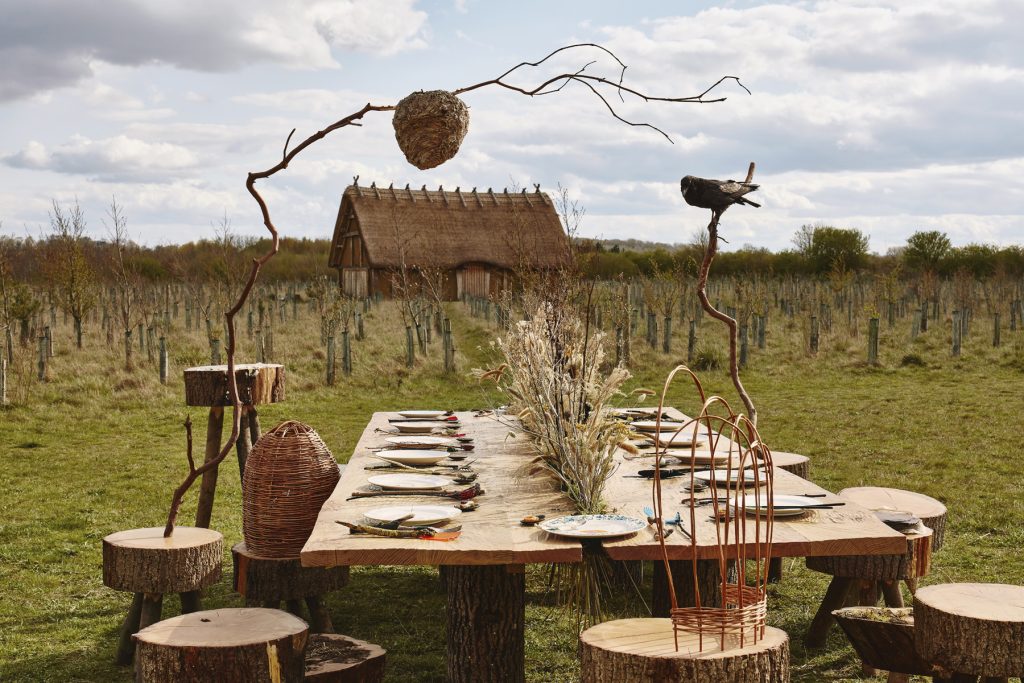
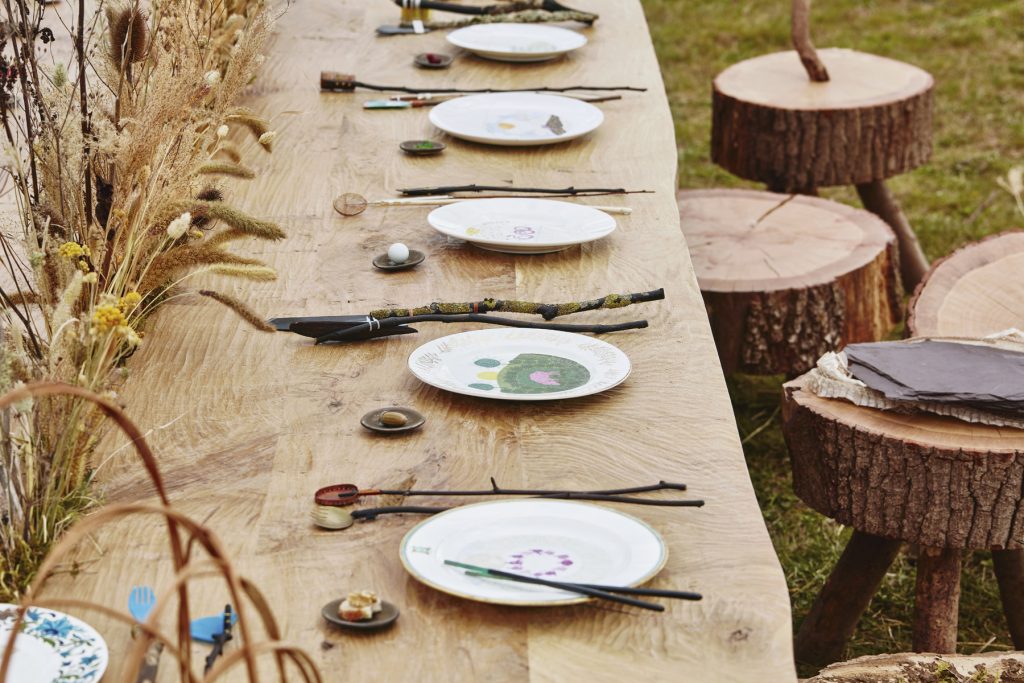
NR: Part of your ethos lies in translating future uncertainty into present-day choices. Is it intentional to choose ‘choices’ over solid responses, answers, and actions towards the global questions and demands?
S: Yes, absolutely. The future is plural – there are many possible futures, and they are all unfolding right now, as we respond to your question. Each and every decision we make today affects our futures, and therefore we see them as choices we have today. For instance, politicians and big businesses can choose to stop coal mines but by choosing not to, they are directly affecting our collective futures and those of all of our future generations.
In our work, we scan large trends as well as weak signals to present the sheer breadth of the complex, interconnected uncertainties that lie ahead of us. By taking time to consider these complex uncertainties and how they might be, we invite decision-makers to consider the choices they have today.
I would love to learn more about your first-ever solo exhibition, Subject to Change. The show “invites viewers to remain open to multiple possibilities and navigate the uncertainty caused by imminent climate catastrophe with active hope.” What multiple possibilities concerning the climate catastrophe are there for the viewers to pick up and use to take action?
Subject To Changeis a collection of Superflux’s four recent works – addressing a range of present-day challenges – from climate crisis to ambient technologies, political unrest, and culture wars.
In Trigger Warning we attempt to surface the widespread civic unrest caused by algorithmically mediated networks, clashing culture wars, and warring ideologies. The fast-paced journey through a city of memes is a critical commentary on where our networked culture has brought us to.
Building on this, our more recent film The Intersection and its accompanying artifacts take us to the end where the seductive power of the metaverse, algorithmic journalism and greed lead to destruction. This time, we wanted to give a glimpse of the way forward, a future where we craft new, hopeful, and enduring relationships with our planet, with technology, with our land, and with one another.
With our more immersive installation works Refuge for Resurgence and Invocation for Hope, we challenge long-standing histories of human exploitation and greed by reframing the human in direct interdependence with other species. In one room, visitors will encounter a majestic oak table inviting different species to dine together, thus acknowledging our shared purpose, our shared fates, a mythopoetic of our unison.
In the film of our installation Invocation For Hope, visitors will journey across wildfire-destroyed monoculture forests to a space of multispecies hope, a chance to reflect on our ecological, economic, and emotional entanglement with all species on the planet. When we love our earth, rivers, rocks, mountains, birds, animals, plants, and fungi, we care for them. And what we care for, we protect. We believe this is a simple but powerful message for action, framed through a poignant, mythical story, folklore, and sensory immersion.
We hope Subject to Change is timely and prescient.
“Our works are not solutions to our crisis, but perhaps more importantly, are beacons of hope, of reimagination, renewal, and precarious flourishing.”
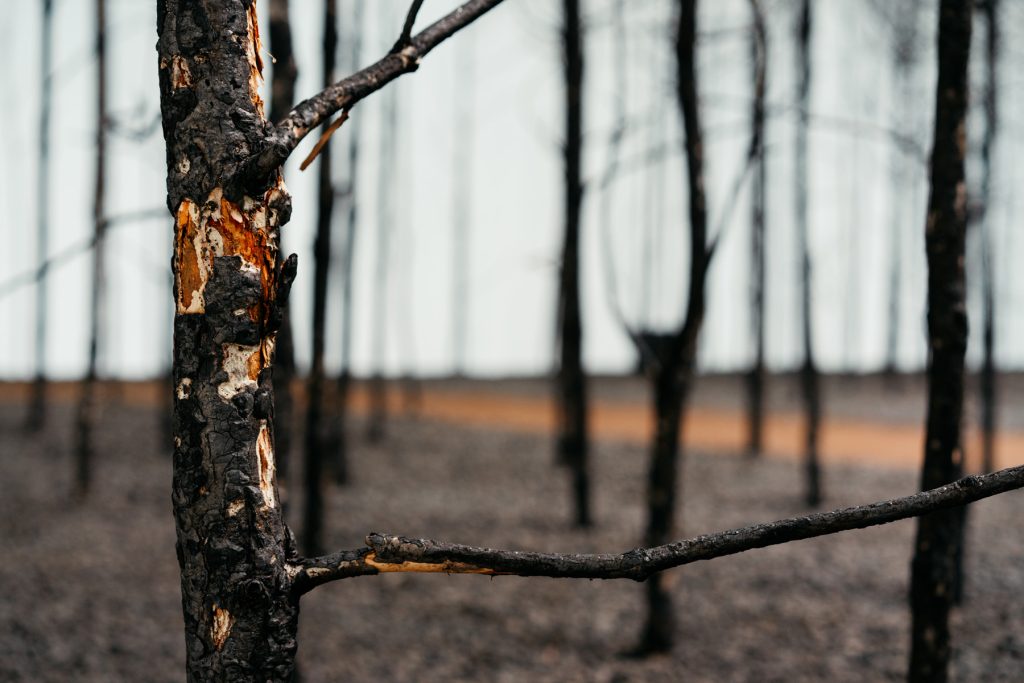

How does poetic and immersive storytelling help you underline the urgent concerns to shift the way we live in the present for the future?
As we mentioned earlier in our earlier works, we have adopted this approach of speculative realism. Recently, though, we have been inspired by other genres like mythology and fantasy to explore possible worlds that are not direct representations of our current world. We want to open up poetic aspects of other worlds that might feel enigmatic, exciting, or magical. We are reaching into a more archetypal space where there are less grounded ideas about the ways we might transform ourselves. We are tapping into deep history and a more primal space in our exploration of the ways we relate to what we perceive as ‘nature’.
Our two recent works have very different manifestations of such poetic and immersive mechanisms to explore more-than-human futures, ecological interdependence, and multispecies cohabitation. Both installations are exploring mythopoetic expressions that celebrate our reciprocal relationship with other species and entities living on the planet, as opposed to a hierarchical or extractive relationship.
With our Venice project Refuge for Resurgence, multiple species enjoy a banquet around a large oak table alongside humans. With Invocation for Hope in Vienna, we are looking at a resurgent forest to show that a truly biodiverse ecosystem will be one that celebrates ecological reciprocity. Two similar themes are explored in very different spatial and aesthetic forms, at very different scales.
Referring to your centerpiece for the show, Refuge for Resurgence, it shows the stories of 14 species who represent life on an ecologically just planet. Do you think human exploitation and extraction are wired psychologically? With that in mind, how can we rework our lifestyles?
Who we are, how we act, what we gather around, our collective agency, our hopeful futures are all deeply entangled with messy histories of mindless extraction, oppressive colonialism, social injustices, and climate apathy. The roots of today’s surveillance technologies, algorithmic culture wars, fractured post-truth narratives, climate crisis, and the pandemic are part of this continuous narrative.
If we want to find hope amidst crisis, we must force a reckoning with such interconnected complexities, and imagine alternatives beyond our present limitations of reality. This is at the heart of our practice – whether it is an immersive installation, a speculation object, or a film,
“we are interested in confronting some of the most complex challenges of our times, and exploring different worlds of possibility, care, and hope.”
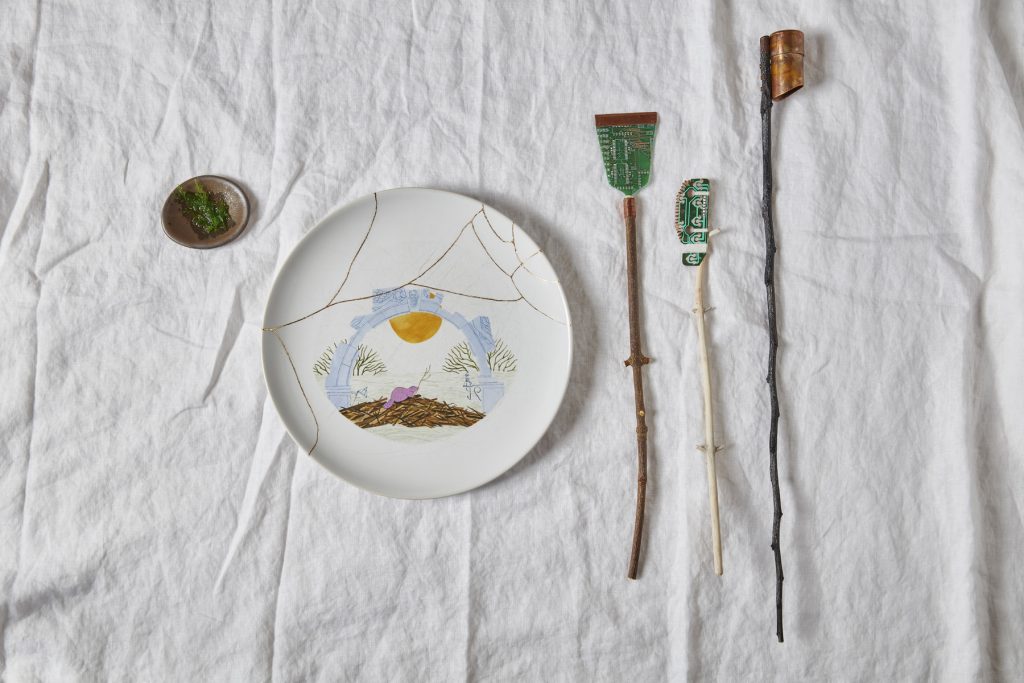

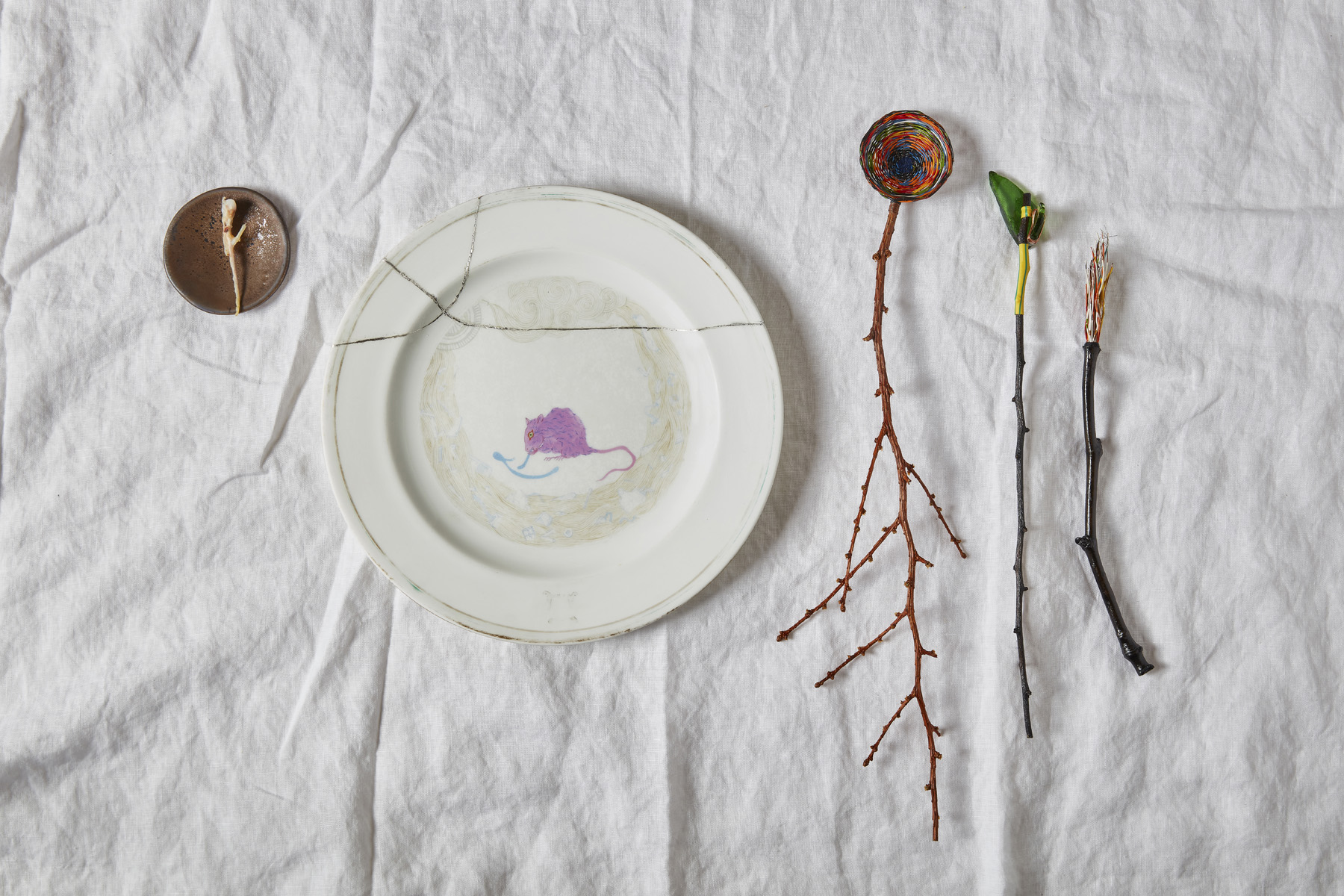
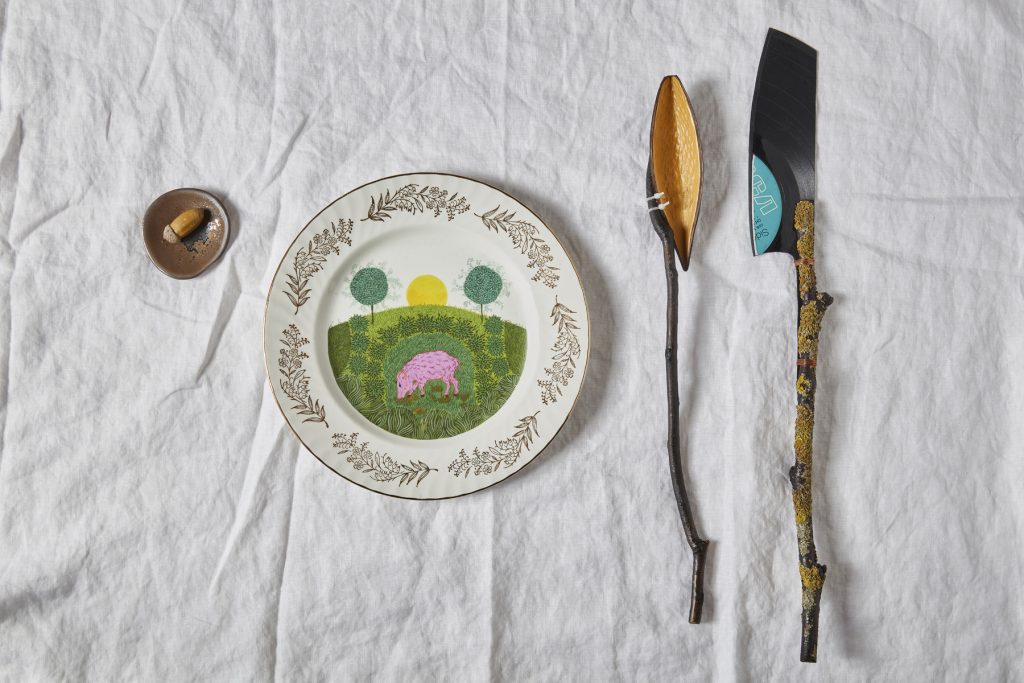
Let us move on to Invocation for Hope. How did the research come about? What was the premise before materializing the installation?
We have done a lot of work in the last few years around the ecological and social aspects of climate change. Our project Mitigation of Shock has had different iterations in London, Singapore, and Germany.
For the project, we invited audiences into an apartment where we are living in a climate of the future. Inside, it becomes easy for people to suspend their disbelief because they see familiar settings and familiar objects, but the longer they spend here they begin to realize that they are actually in quite a different world, with unfamiliar and strange elements such as a radio playing a show called ‘Pets as Protein’, a newspaper that has been opened on a disturbing article, or a recipe book next to some foraging notes.
There are many stories about climate change and our responses in the public domain. There is this ‘dig for victory’ narrative which argues that we can just grow food in new ways or create new technologies. In Mitigation of Shock we said: “Okay, what would that future actually look like?”
We invited people to explore that world. With Invocation for Hope, we are reaching into a more archetypal space where there are less grounded ideas about the ways we might transform ourselves, a tap into deep history and a more primal space in our exploration of the ways we connect to what we have grown to learn and recognize as ‘nature’.
Through our projects around the climate crisis, we have become increasingly drawn to a more-than-human approach. Whilst working on Mitigation of Shock, we had the chance to closely observe and learn about our capricious food and agricultural systems. Through hands-on experiments in growing different prototypes of food computers, we became increasingly drawn to the importance of multispecies cohabitation.
Our work has begun to focus more on these conditions that we are generating in collaboration with other species. A more-than-human perspective allows us to see how we are ecologically, economically, and emotionally entangled with all species on the planet.
That gives us a certain kind of humility, to be able to see our role not as individuals who harvest nature for what we call ‘natural resources’, but to take care of those who take care of us.
That is at the heart of a lot of our recent work.
“We want to foreground how we are a part of a larger ecology rather than the masters of nature. Within this complex ecosystem, we all play a part in mutual survival and evolution. Without it, we cease to exist.”
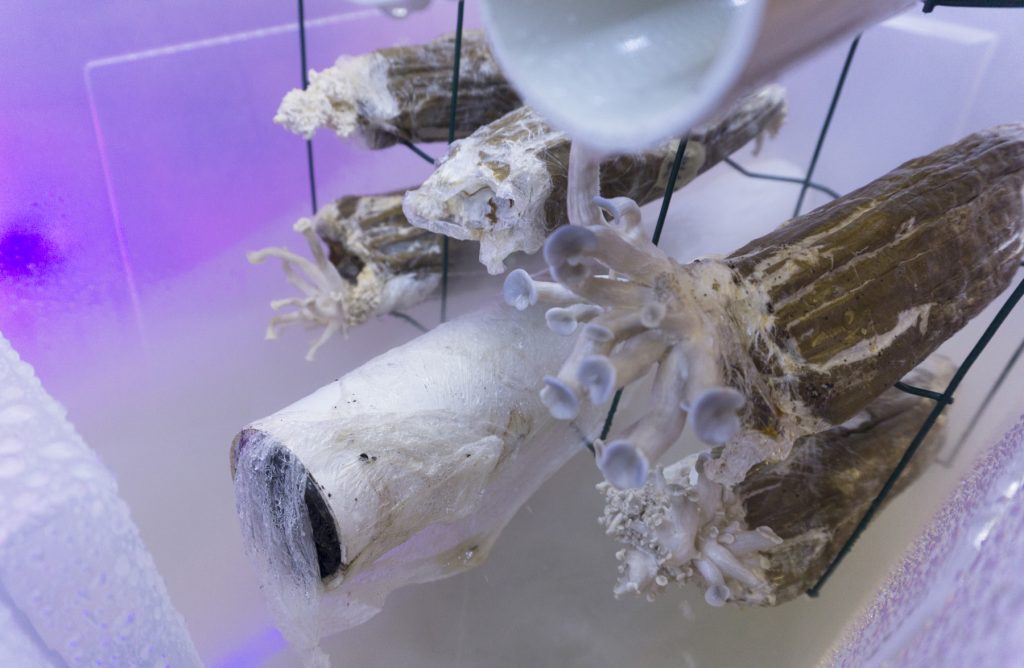
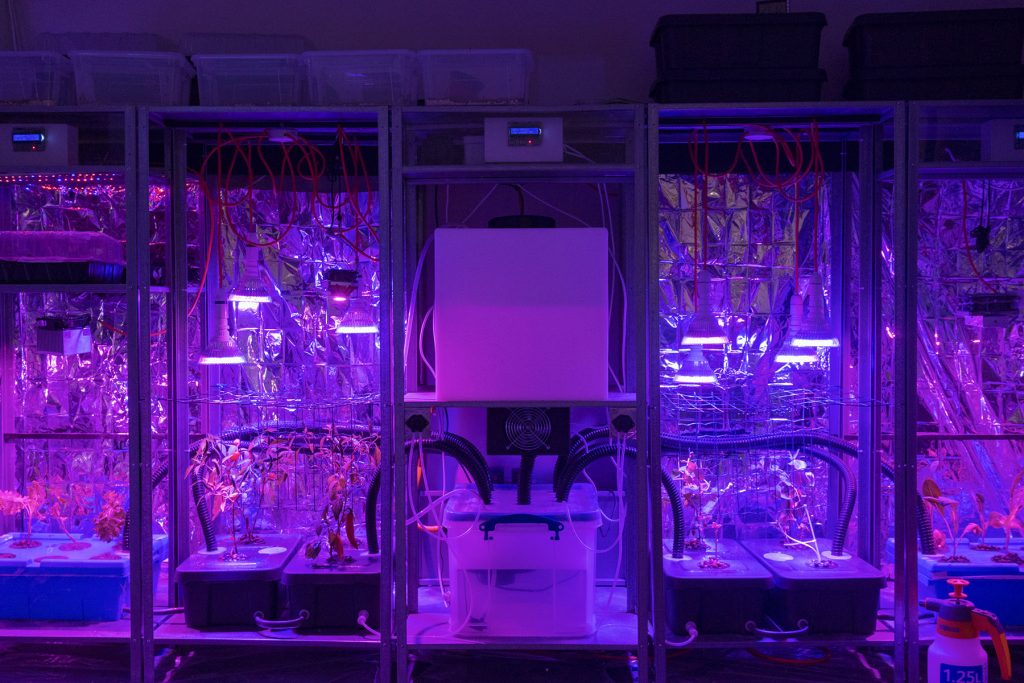
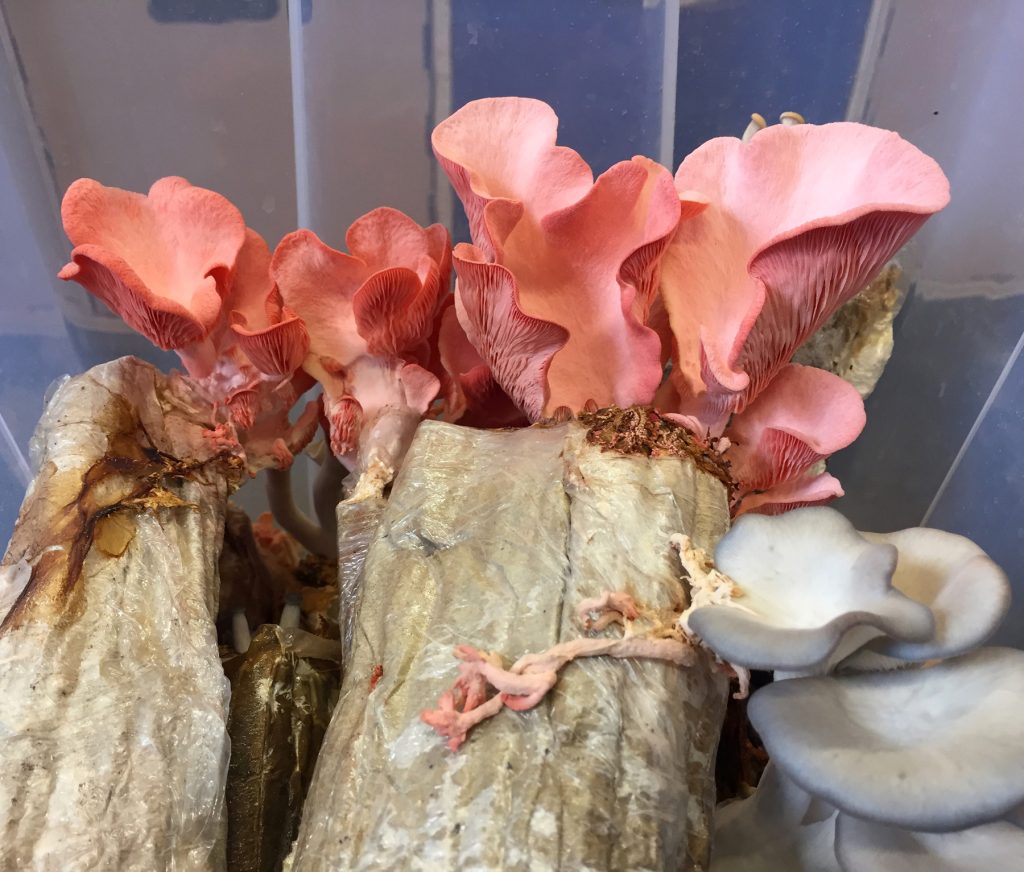
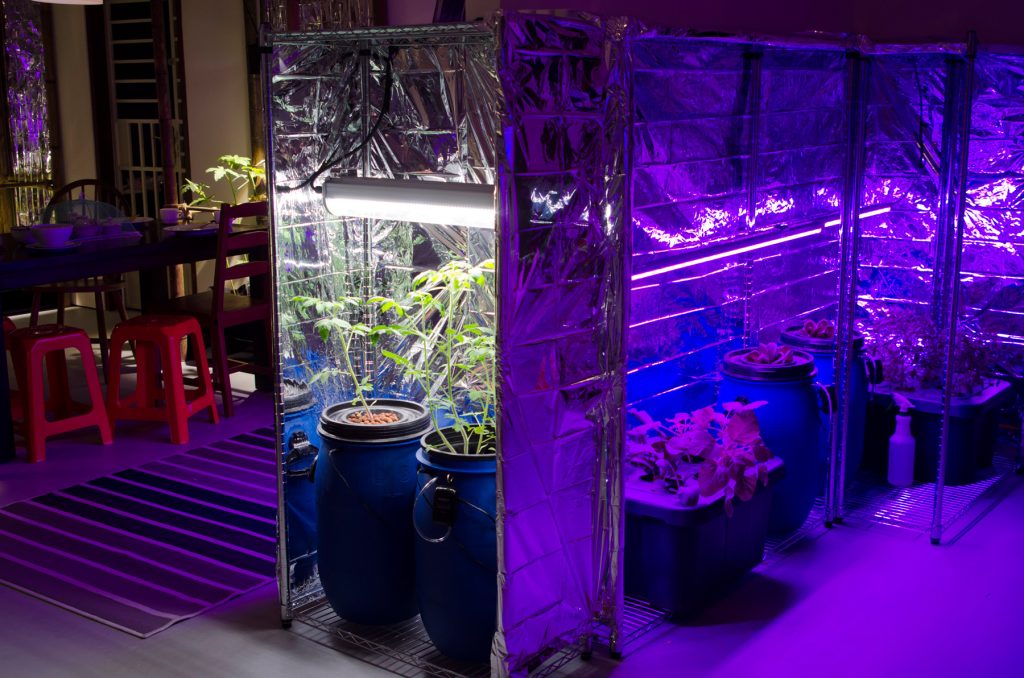
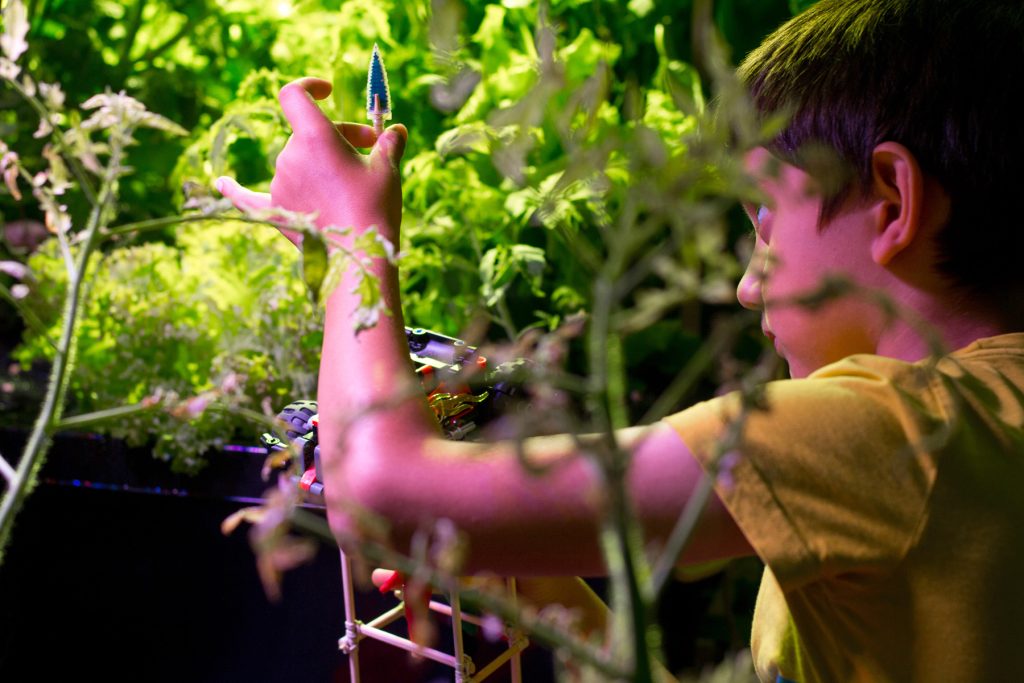
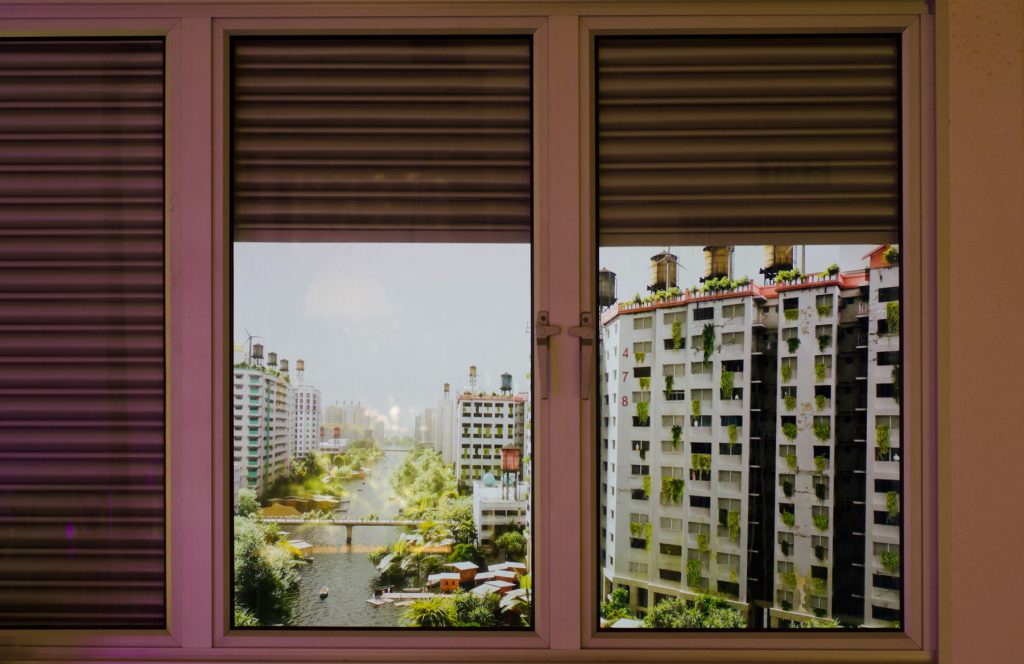
For this issue, we’re focusing on Celebration. How would you like to celebrate your boundary-defying studio and the themes and philosophies the team believes in?
There is no more discussion around the fact that we are causing a climate crisis. We are. Human beings are responsible for what is likely the Sixth Extinction. There is so much work around the climate crisis, real action-oriented work, but we feel that alongside that, we also need to nurture the public imagination with alternative narratives.
It is only when people, from within themselves, start to feel a sense of love and connection with the species around them, a love for the planet, that this action-oriented work will take off because everyone will truly feel the same sense of urgency.
If we believe other worlds are possible, we will want to do something about it. That is what we want to celebrate: the power of our collective imagination in making other worlds possible.
Credits
Images · Superflux
https://superflux.in/